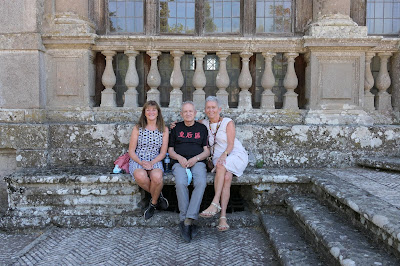A few days ago, November 6, I joined my neighbor to help with her friend's olive harvest. Last November I went to pick olives for the first time at the same place. So much of my life in New Jersey was marked by the seasons, and it felt special to have that same experience in a different country. However, one year ago, the day had a different feel. For me personally, it was the start of my stay in Italy, with every day full of promise. Globally, there was no pandemic and no tension about waiting for the choice of the new US president.
A day in the countryside to pick olives provided a break from constantly checking my phone to see the latest numbers for the Covid cases and the election results. Being outside and "distanced" from other people meant an entire day without needing a mask! I felt productive and happy to contribute to such a worthwhile project as making olive oil.
The Trump presidency and the election were often topics of conversation among American ex-pats, but also with my Italian friends and even with strangers. Last week, while at the laundromat drying my sheets, a gentleman came in and inquired about the change machine and whether soap was needed in the washer. (All the instructions are written in Italian and English. He spoke Italian.) He asked me where I was from and when I replied "the United States" he gave a thumbs up and said, "Biden".
Then, while olive picking, one of the women asked me why the election was taking so long. She spoke a bit of English, and my Italian skills were not enough to explain the process of the absentee ballots and mail-in votes. But, we did our best and she seemed to understand the many complications. I'll tell you, when an Italian shakes her head over American bureaucracy, you know you are in trouble!!
Now, the election has been decided. Hopefully, my sleep will improve! And, for America and the rest of the world, I have much bigger hopes.

























































